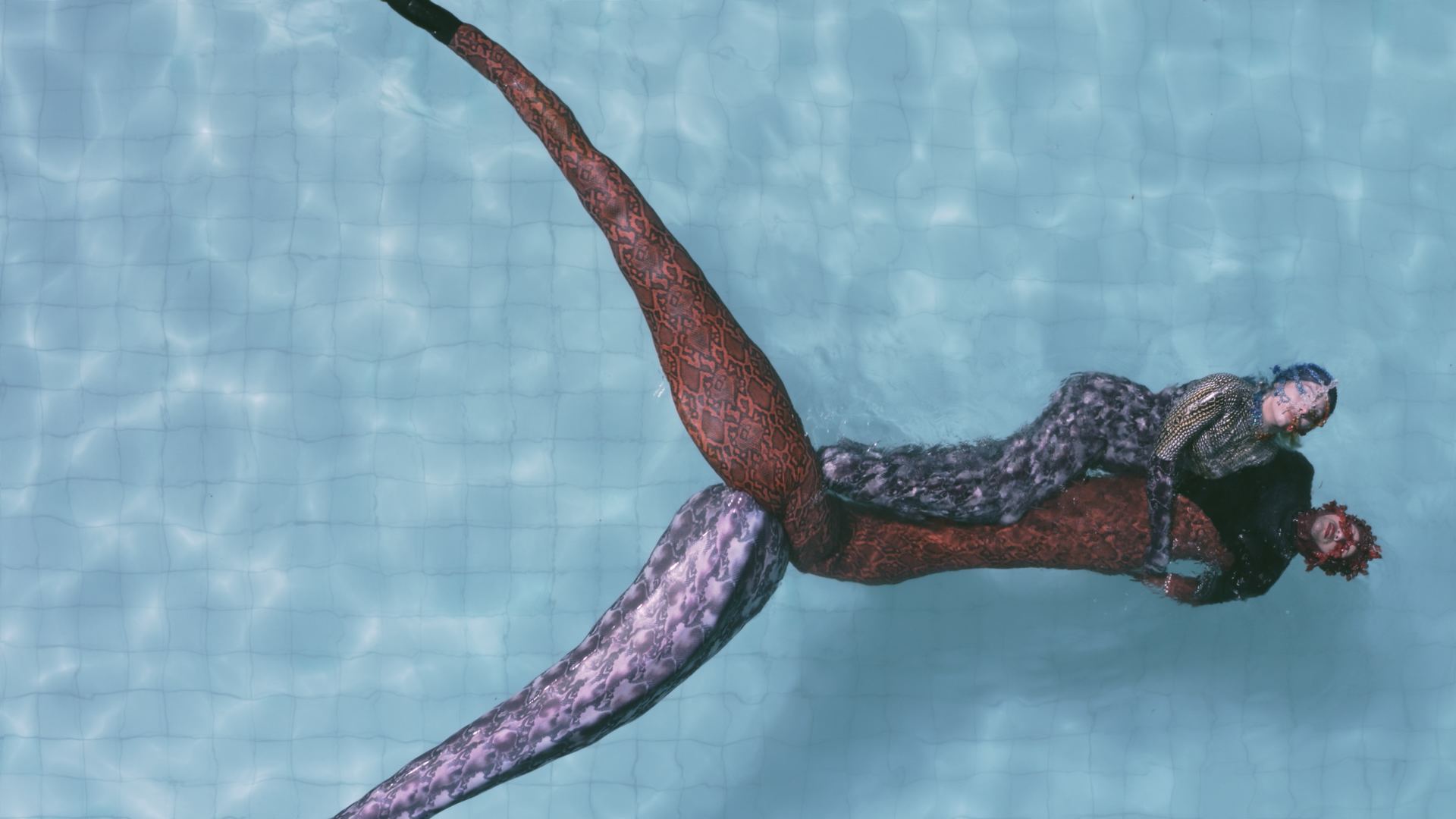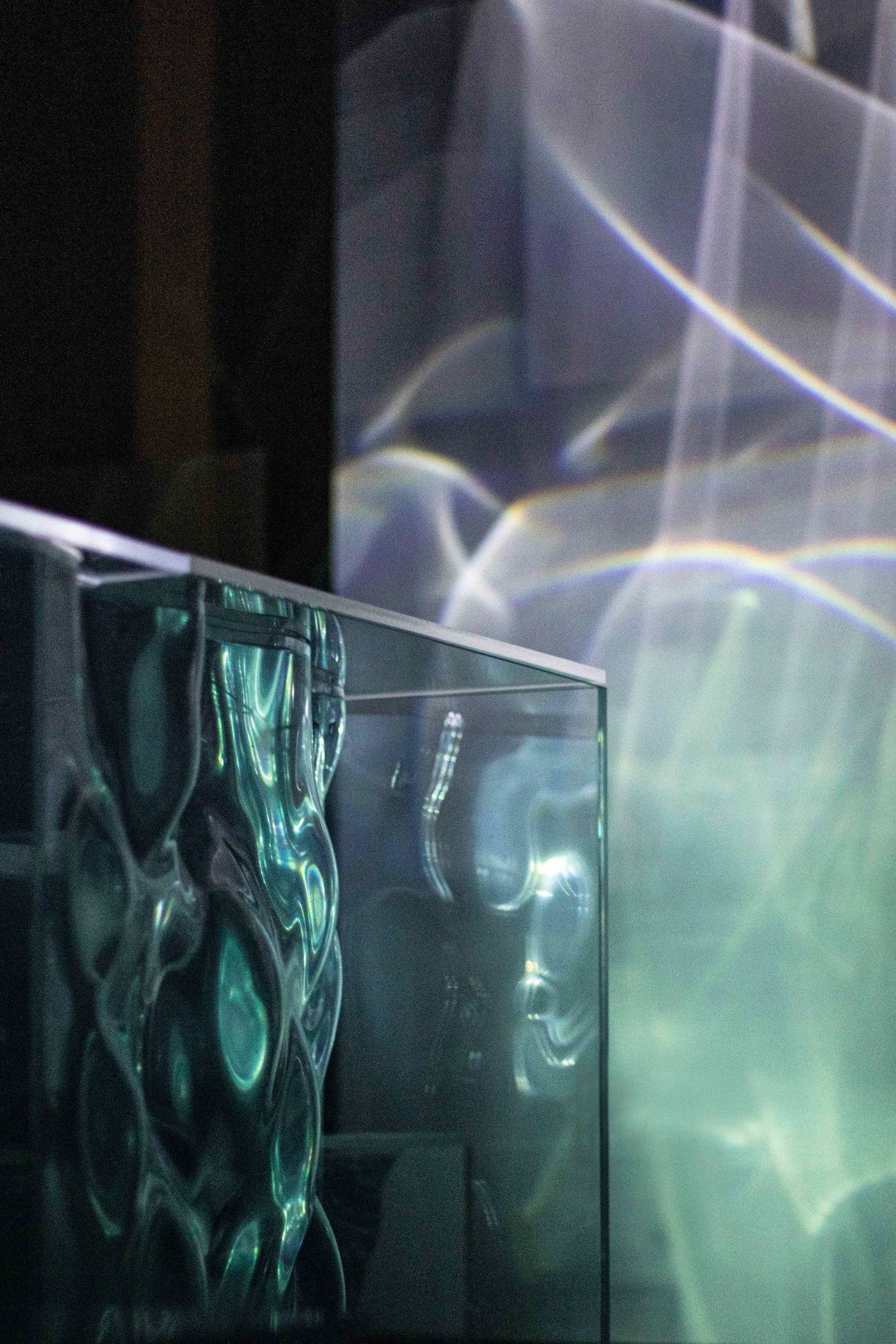L’étant
Esther Denis
Installation
Black water in a black room. Daffodils at the water’s edge. A vanity in the form of a naturalized guinea fowl. In the murky water, reflections of another world. In the center, shadows pass over a mother-of-pearl mirror, caused to sway by drops. The reflection of Narcissus, the flesh of his skin mingling with that of the river; they are one. In the air, the ghostly echo of paradise.
Shadows, reflections and echoes, the “figures of the double”, as philosopher Clément Rosset puts it, are both guarantors of reality and factors of illusion.
Today, we’re experiencing an ecological crisis that has also been described as a crisis of sensibility. The installation L’étant looks at this crisis from the point of view of the tools and devices that have contributed to the transformation of the living into decor. These include the black mirror, the diorama, the camera obscura and the camera lucida. The latter sublimate the game of representation. By means of a hole or a lens, they allow an inverted, fragmented and powdered image of the outside world to emerge.The aesthetic of this work is rooted in the interweaving of art history and science.
The installation aims to politicize wonder, to renew our interest in the earth, its beauty and its mysteries. Being is an eye offering a different view of living things. Optics and video mapping, smell and soundtracks, taxidermy and choreography are superimposed to multiply access routes to the imaginary, complexifying and magnifying a cosmogonic relationship with the living.
Being attempts to simulate the infinite beneath our feet.

Artists
Esther Denis
Esther Denis (Brussels – 1996), visual artist and set designer.
Her first contact with the arts and the stage took place on the stage of La Monnaie in Brussels. A chorister with the Children’s Choir, for ten years she lived in the world of opera directors during rehearsals and performances.
These experiences fueled her desire to learn more about the scenic and sound arts; she studied at La Cambre in Brussels, then at the Arts Décoratifs in Paris.
Her practice hybridizes the performing and plastic arts, and focuses on optical devices for the representation of the living. She combines current technologies with ancient representational devices such as the diorama, the black mirror and the camera obscura. Her installations have been the subject of several solo and group exhibitions at La Grande Halle de La Villette in Paris (2021), Les Grandes-Serres de Pantin (2022), Teatros del Canal in Madrid (2022), Galerie Sainte Anne in Paris (2022), PhotoBrusselsfestival (2023), Point Commun – espace d’art contemporain in Annecy (2023), Centre Wallonie Bruxelles in Paris (2024).
Parallel to this approach, she has a special relationship with the stage. Today, she works with a number of directors, choreographers, set designers and playwrights, including Emanuelle Nizou, Louise Vanneste, Sophie Warnant, Nicolas Mouzet Tagawa and Frédérique Aït-Touati, researcher and director.



